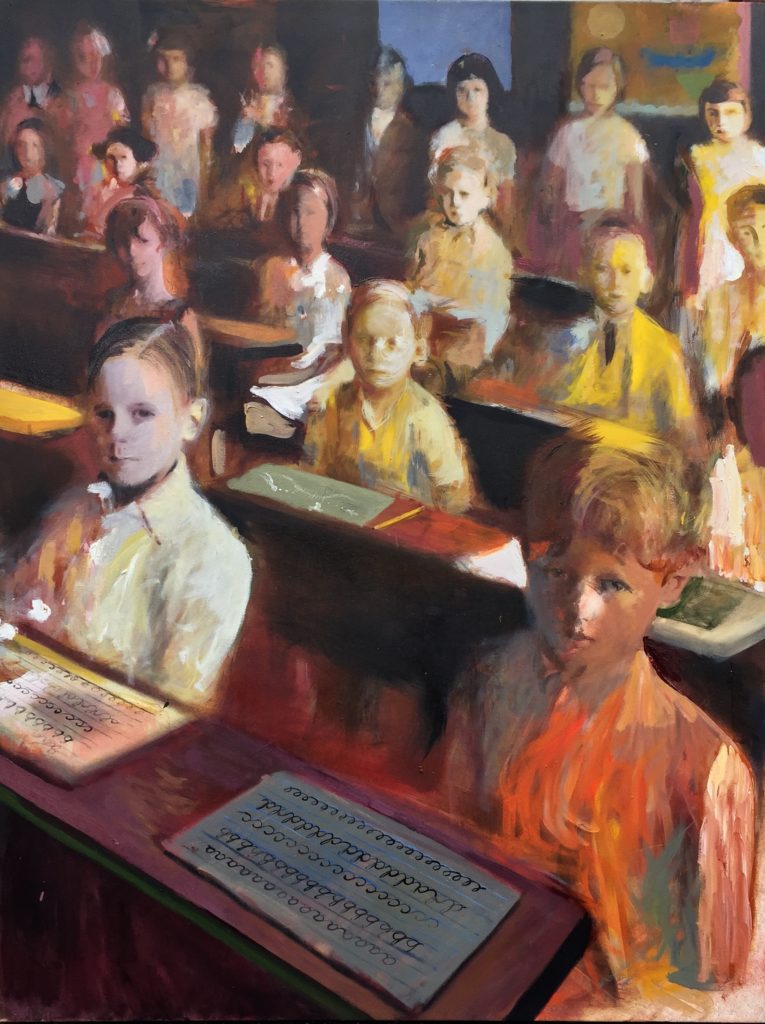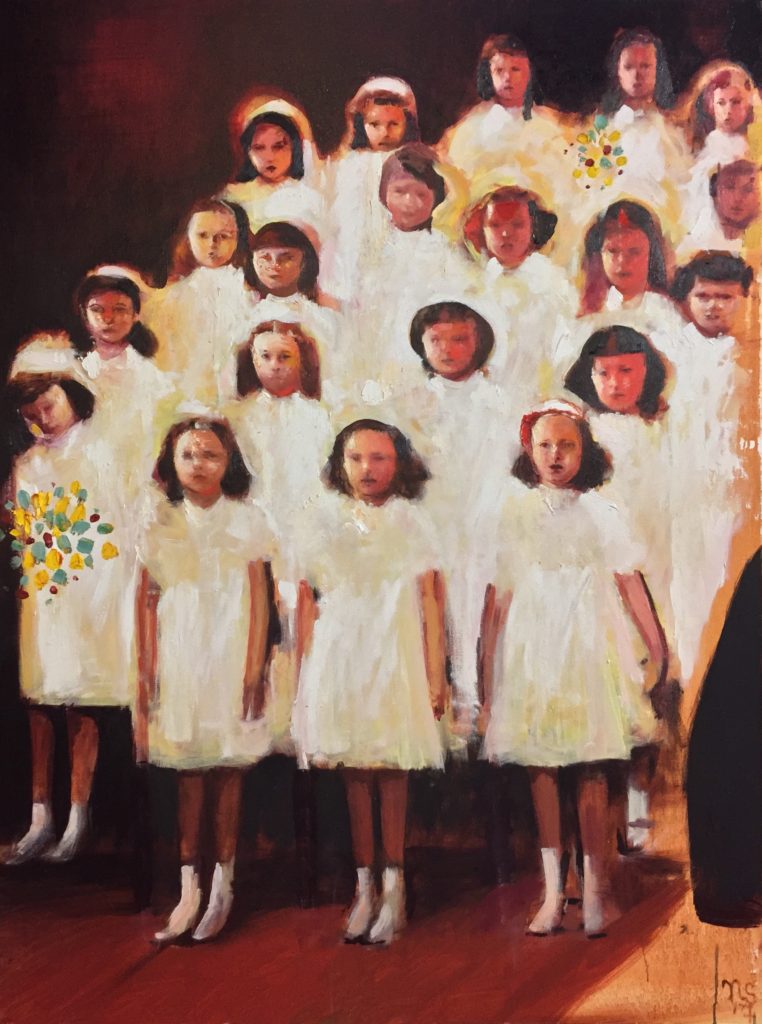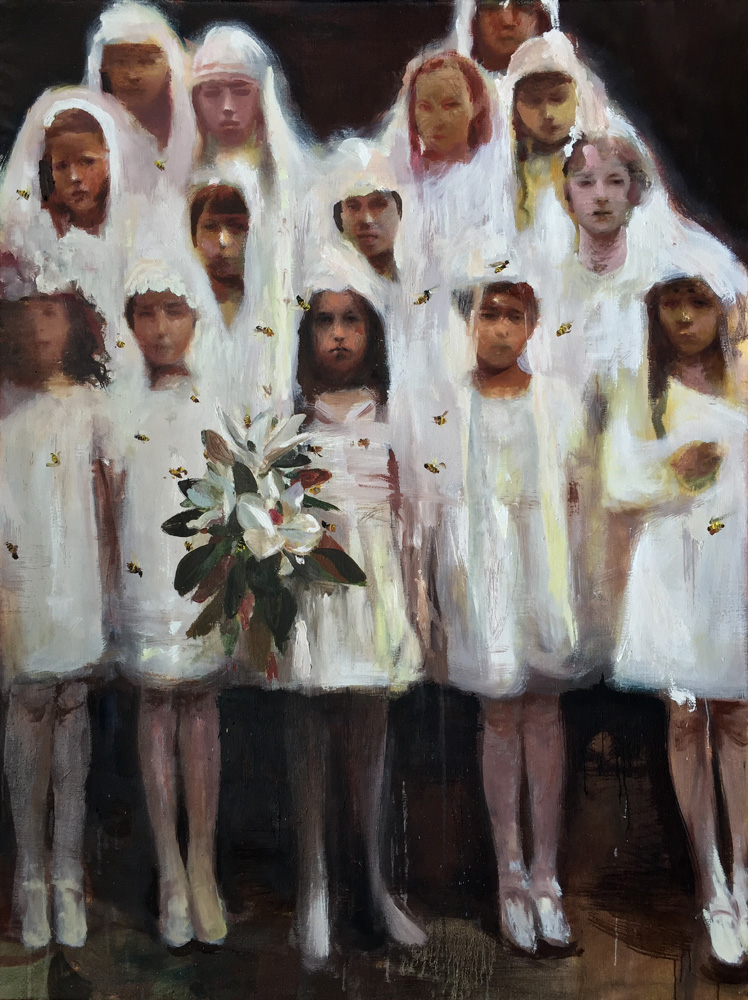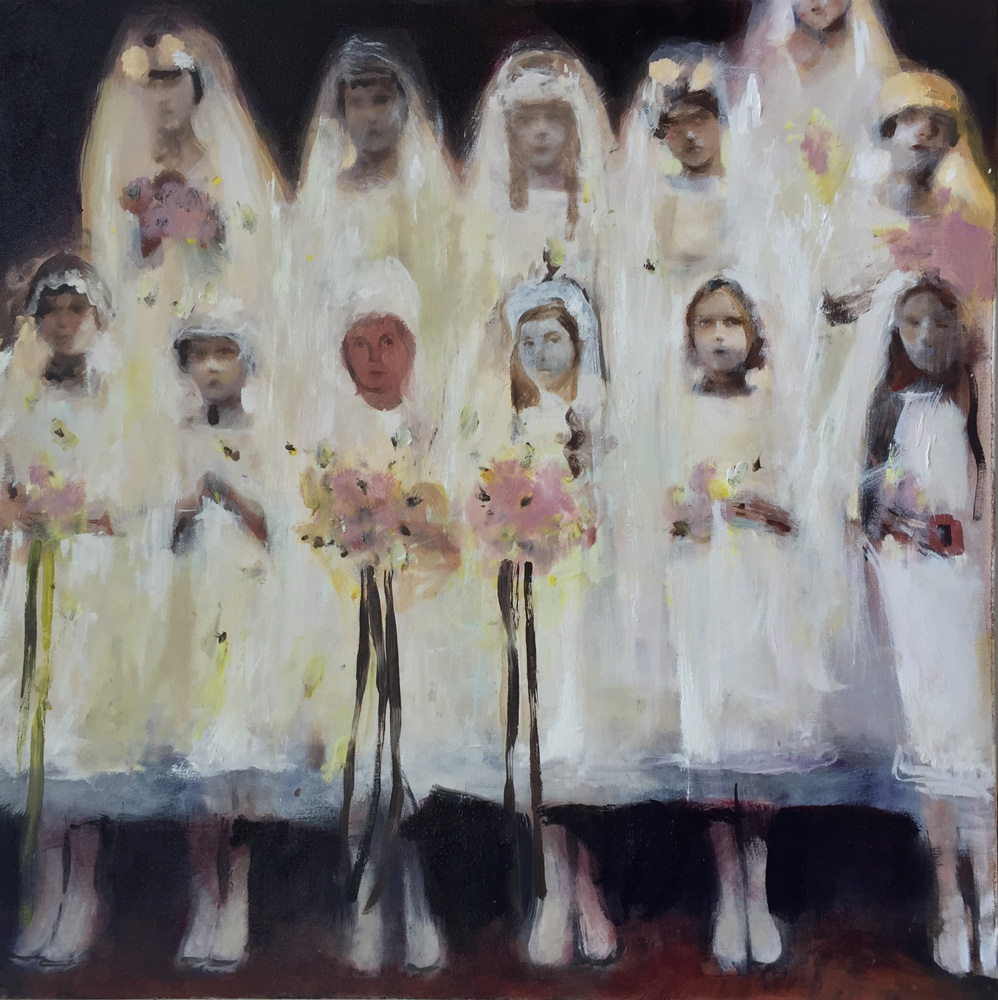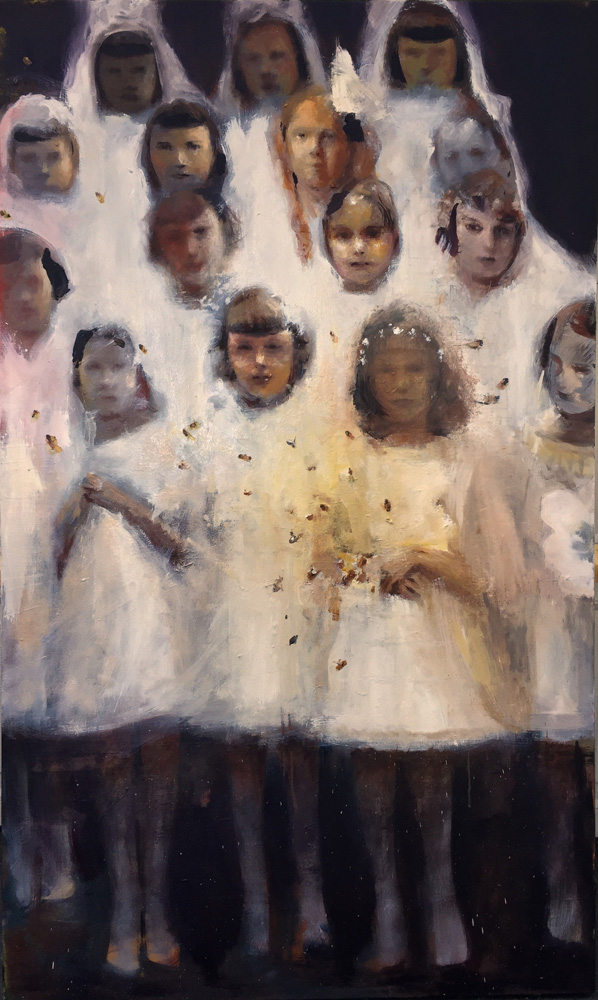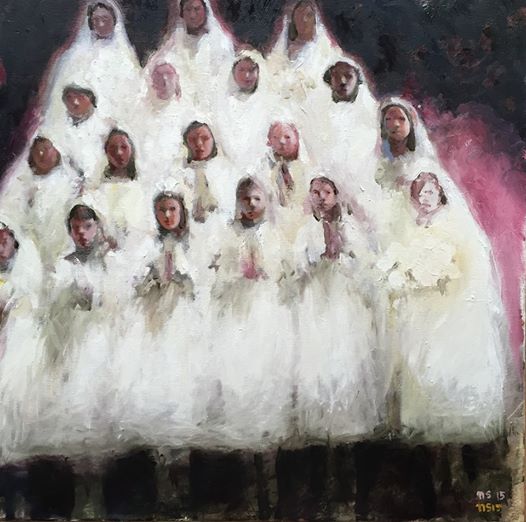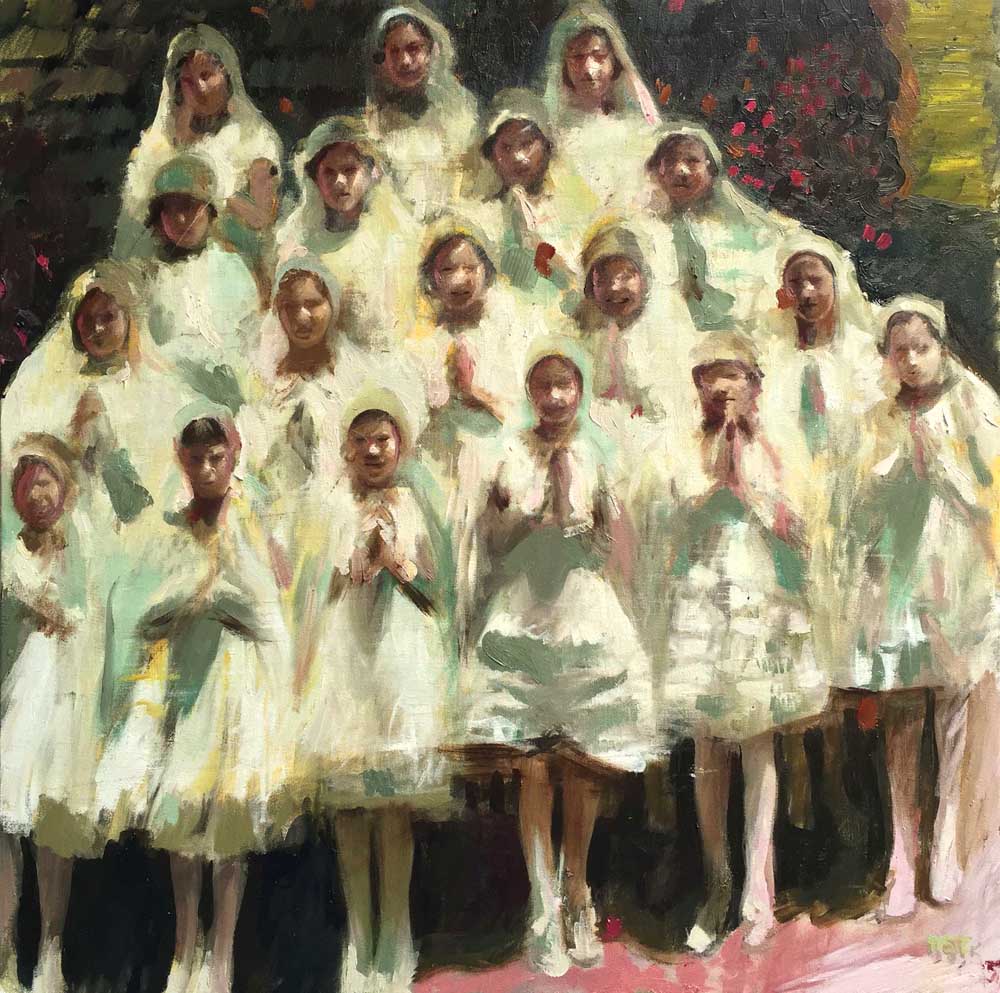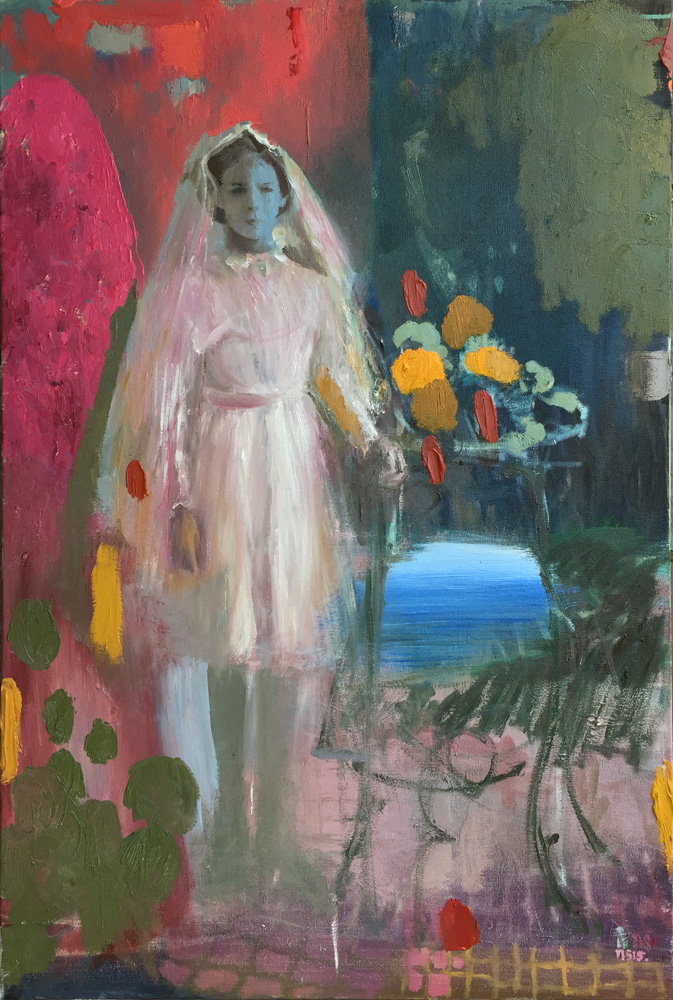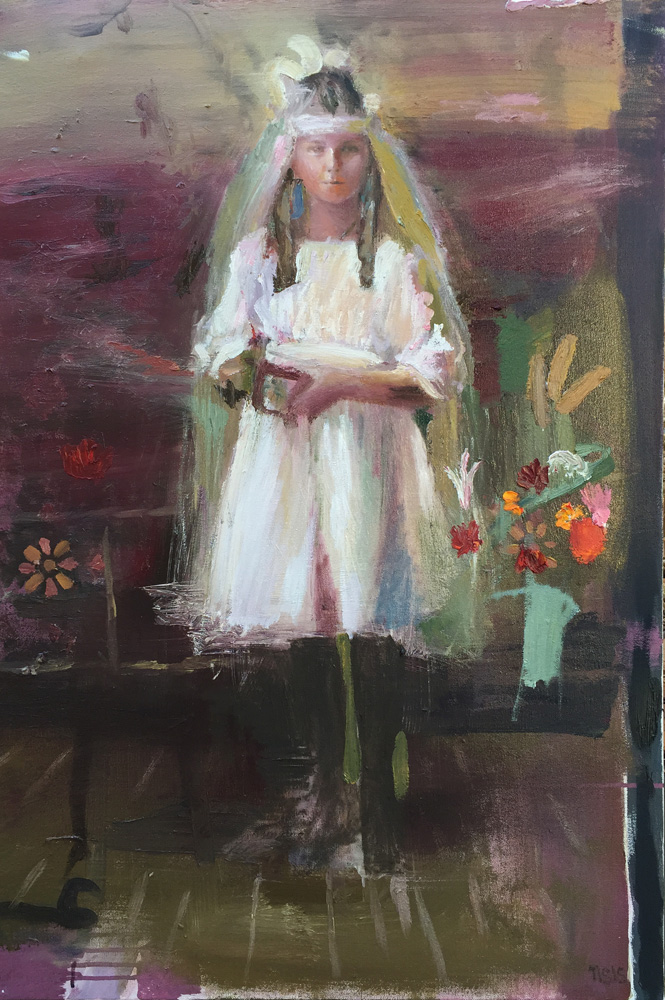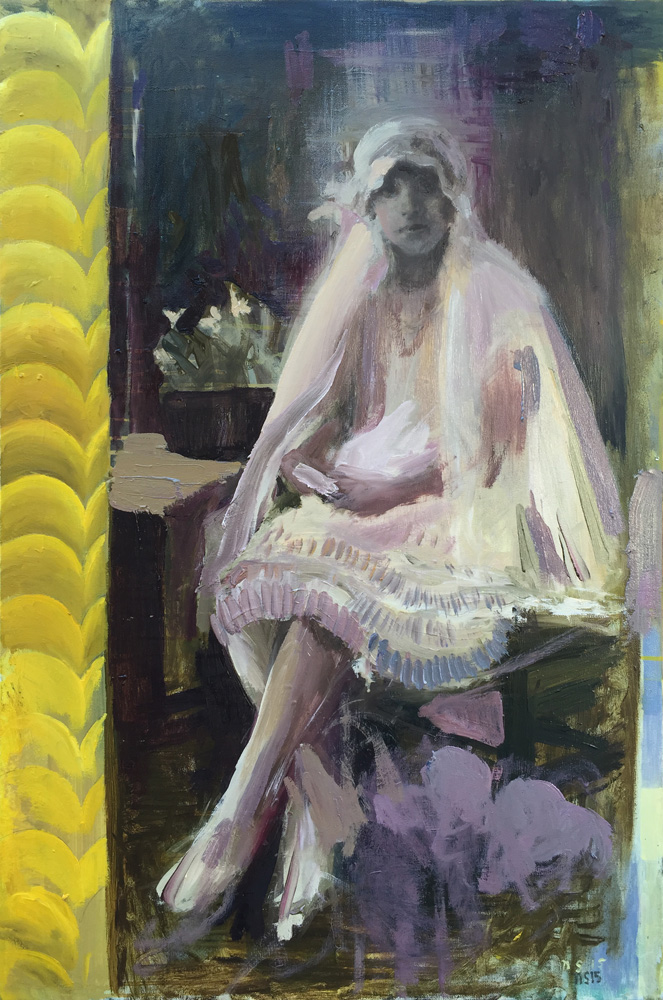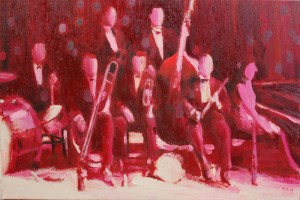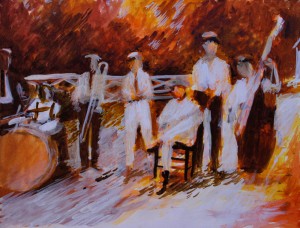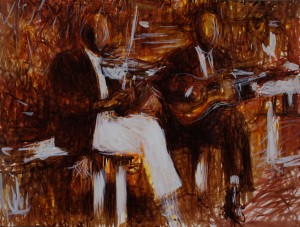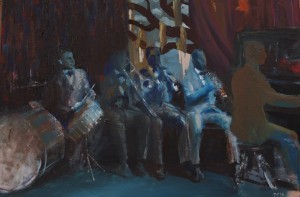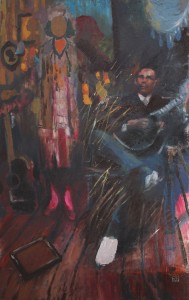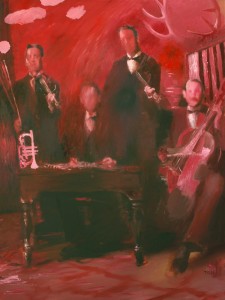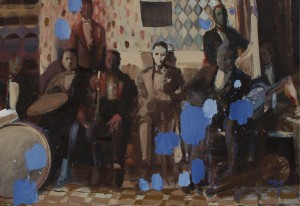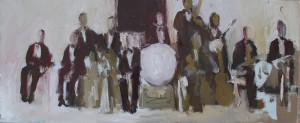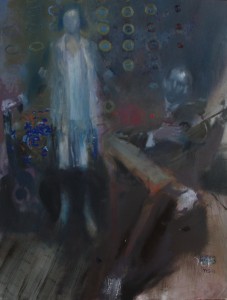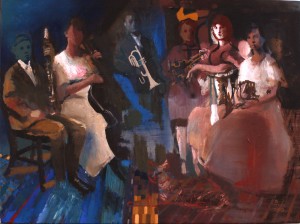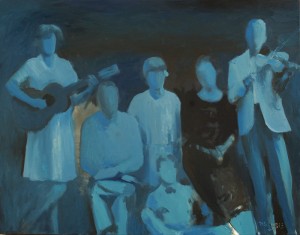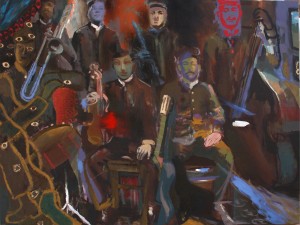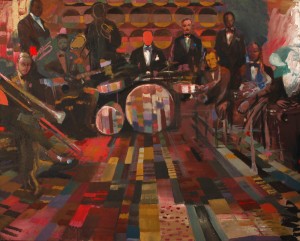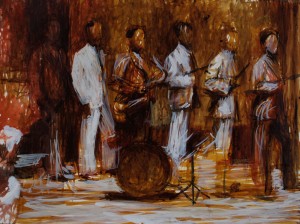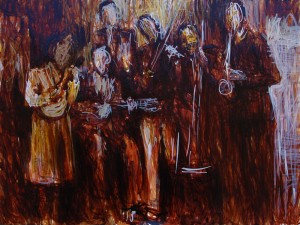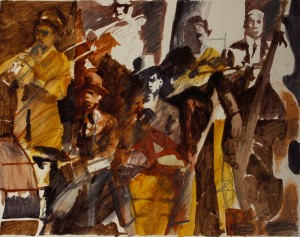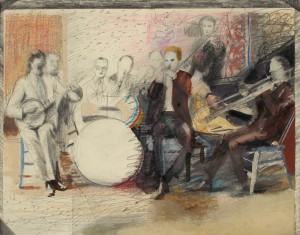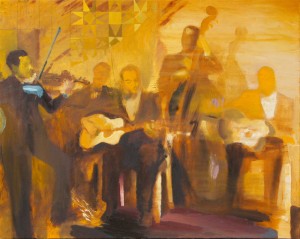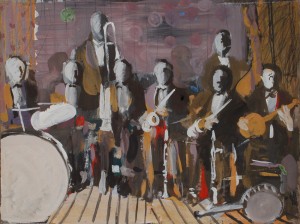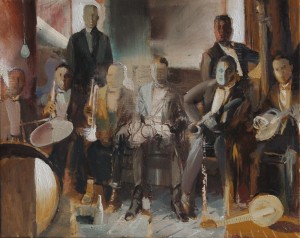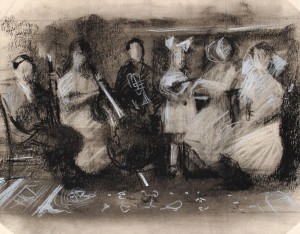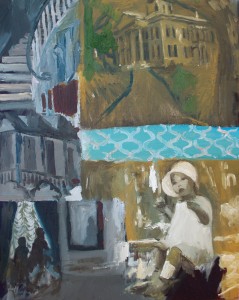Carol Robinson Gallery
Our Lady of Lourdes
Orphans & Hornets
Orphans & Ribbons
Orphans & Bees
Orphans with White Flowers
Orphans with Hands Together
Orphans with Chrysanthemums
Carte de Visite #11
Carte de Visite #10
Carte de Visite #9
Going to Shubuta
The origin of this image is an ancestral memoir recounting a journey from Natchez, Miss. to Shubuta, Miss. in 1863.
“The party consisted of my Mother and myself, my uncle George N. Monette and my cousin Billy Phillips and my Negro nurse Emeline Netter. Although I was less than two years old at the time, I can recall as if yesterday little incidents of that journey, – the drive over rough country roads through the great forests of virgin long-leaf Pine which then covered that part of the State, the stopping at times to rest and eat lunch under the shade of the trees, and sometimes at farm houses in the “clearings,” – my uncle and cousin jumping from the wagon and walking up the long hills to ease the tired wagon mules, and at last the meeting with my dear Father at the little town of Shubuta.”
Related Images:
The Rose Room
I already posted this but then I changed it, so this is me posting it again. And oof, this photo is kind of glare-y; highly glazed surface. It is also the final piece in this group of musician paintings. They’ve been very fun to paint, and all the while I’ve been painting to the alternating musical backdrop of early hill country blues and Frank Zappa and the Mothers of Invention’s full concert at the Palladium in 1981 (a youtube video find). A curious mix, but effective.
Related Images:
Something Doing
If I Had Possession Over Judgment Day
How Deep Is the Ocean
This is a heavily encrusted painting, with lots of evident wrangling. Sometimes a painting comes together without a mess and a fuss, and that’s okay too, but if there are lots of changes of mind, they might as well be available for view. A live oak, an orange bird, a curtain of impasto and figures who come and go. The piano player is a kind of anti-color, like what collects at the bottom of the turpentine can.
Related Images:
Ida Belle Don’t Cry This Time
The title of this comes from Robert Johnson’s 1936 recording of “Last Fair Deal“: Ida Belle don’t cry this time / Ida Belle don’t cry this time / If you cry about a nickel / You’ll die about a dime.
When I was seventeen, I moved to Jackson, Mississippi and was on my own for the first time. I spent a lot of time in my station wagon exploring every dark corner of Jackson, playing my Robert Johnson tape on a cassette player I held on my lap while driving. I remember rewinding this song over and over. I also played a lot of guitar that year but could never play a Robert Johnson song to save my life. This painting feels more like his music to me than anything I ever could do on the guitar, though of course there’s no real comparison. As a side note, the Wastrels are making a cameo appearance in the pictures on the wall above Ida Belle’s (presumably) double arm. Immutable little interlopers.
Related Images:
Roaming in the Gloaming
Tiger Rag
This is related to Sweet Emmalina. The fellow on the far left is a cut-up in both.
Related Images:
Yah-De-Dah Float Me Down the River
When You Wore a Tulip and I Wore a Big Red Rose
Don’t Go, Flo
There is a vaporous mood in this one; ether and suspended blood cells. Hard to know where to point one’s eyes sometimes.
I don’t have a problem with others signing their work, but for me adding my signature to a painting, after working to create a balance of marks, can feel like an invasive afterthought. So I’ve started signing a canvas as soon as I start the painting, then signing it again periodically throughout the process of making a painting. That way the signature feels more a part of the painting process and not something jammed on like a mic-drop at the end. In “Don’t Go, Flo” you can see a little swarm of initials in the bottom right.
Related Images:
Softly, As In a Morning Sunrise
What a Little Moonlight Can Do
Sweet Emmalina
Here is another large-ish oil painting. There is a lot to look at in this image, and a lot of eyes looking back. The paintings hanging on the wall on the right side make me want to walk behind the bass player and see what’s going on back there. And pink face, can’t even look directly at him almost. Then there’s the rakish fellow on the left, all rubbery and swarming with eyes.
Related Images:
Ja-Da (Ja-Da, Ja-Da, Jing, Jing, Jing)
I am fortunate to have a solo show scheduled at the lovely Carol Robinson Gallery. The exhibit will consist entirely of paintings of musicians and I thought I’d start posting them on the Work-a-Day one at a time.
This one here is a biggie. And colorful.
Ja-Da, Ja-Da, Ja-Da, Jing, Jing, Jing!
Related Images:
Someday Sweetheart
Band #32, Batts Band
Number Twenty-Two
Number Twenty-Three
Number Seventeen
24″ x 30″
I forgot to post this one a couple weeks ago when it went to New Orleans. Another of the band paintings, oil and all its magic subtleties.
Found a box of old oil paints at a thrift store, from back when they were still making pure cadmium- and lead-based paints — before the industry went soft with all the ‘health concerns’ associated with toxic pigments and binders. Another example of toxic beauty; the yellows are gorgeous, bright and astringent.
Related Images:
Number Twenty-One
11″ x 14″
The more I do these musician drawings, I think I’m still putting in too much information. The eye can figure out how the bodies and space fits together without much info. I remember reading John Berger’s writings about transcribing radio transmissions during WWII and how the mind can create (even with flaws) a whole image or idea from only a few staticky scraps. And then there’s this that I’ve seen floating around the internet for years:
Aoccdrnig to rscheearch at Cmabrigde Uinervtisy, it deosn’t mttaer in waht oredr the ltteers in a wrod are, the olny iprmoetnt tihng is taht the frist and lsat ltteer be at the rghit pclae. The rset can be a toatl mses and you can sitll raed it wouthit a porbelm. Tihs is bcuseae the huamn mnid deos not raed ervey lteter by istlef, but the wrod as a wlohe.
Related Images:
Number Twenty
11″ x 14″
These group portraits of musicians, they remind me of something Cézanne said about his still-lifes, like “I’m not interested in apples, I’m interested in how I perceive apples. I feel that way about the musicians (his apples are better paintings, but that’s comparing apples and…).
I went looking for that quote but couldn’t find it, but instead found lots of other things Cézanne said, some very odd, and decided to string them into a paragraph. It makes a strange little proclamation. I know you’re not supposed to jam together other peoples words, but it’s fun and I’m not a journalist, so here we go:
“Tell me, do you think I’m going mad? I sometimes wonder, you know. Painting is damned difficult – you always think you’ve got it, but you haven’t. A thousand painters ought to be killed yearly. Say what you like: I’m every inch a painter. I want to die painting. I am the primitive of the method I have invented. I’ve come to the conclusion that it’s not really possible to help others. We live in a rainbow of chaos. I allow no one to touch me.” — Paul Cézanne
Related Images:
Number Ten
Number Eighteen (Musical Children)
Number Sixteen
Number Eleven
Curtains
Train Case
Stitcher Girls
Bookoo and Cilice Grow Large
The Bedraggled Mother
Picasso & His Sister
Good Luck Darling
Fortified Belly
Trick Tiger
c d , ;
Dream Boat
Child, Version of Child
Father Do You Know Me?
approx 13″ x 20″
from the memoirs of my great great Grandfather, written in 1932 on the death of his father:
“The next night, November 11th 1884, he died. For several weeks he had been kept alive by stimulants and artificial means; but seeing how useless, he begged at last that they be stopped so that his suffering might end and he be at peace. Just before he died I asked, “Father, do you know me?” – He gasped, “Oh my son, I do, I do!” They were his last words… Gently, tenderly and sorrowfully we laid him away in our City of the Dead, and then took up for ourselves the burdens of life, which he had borne for us so long.”
